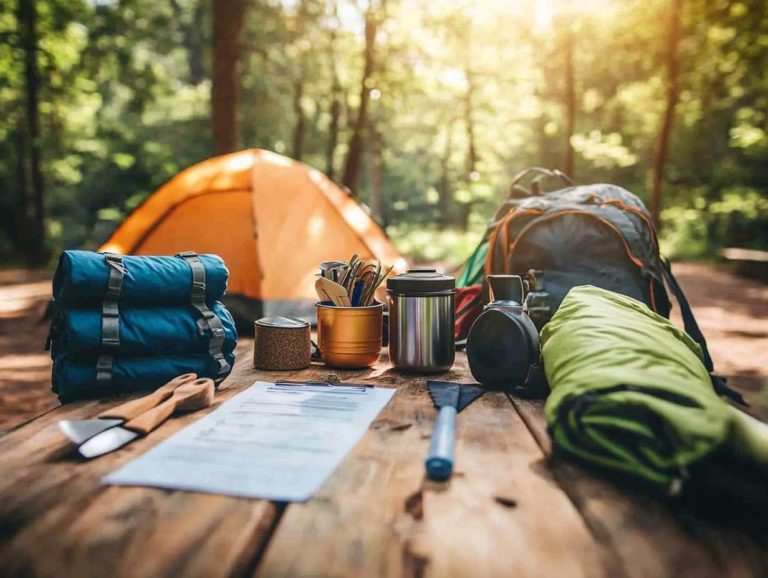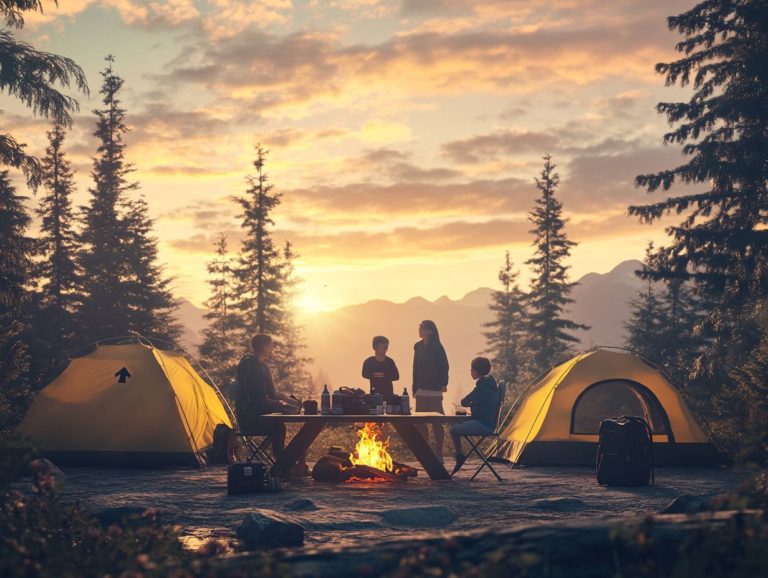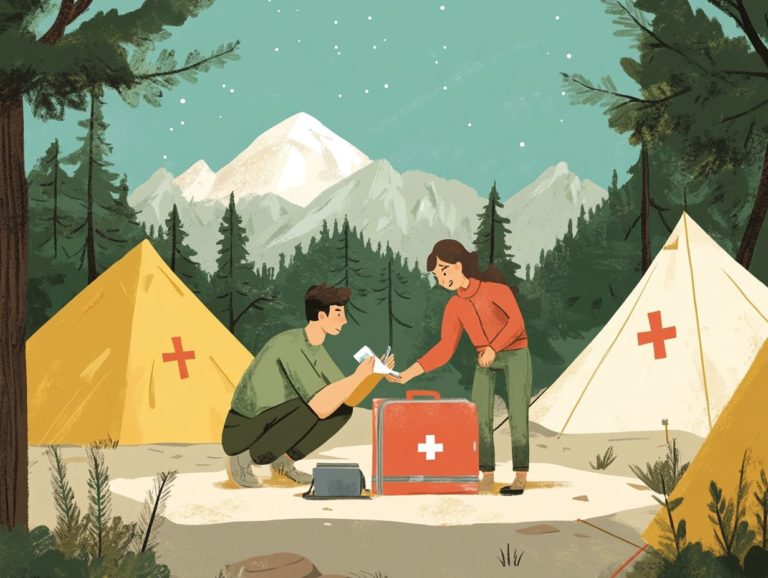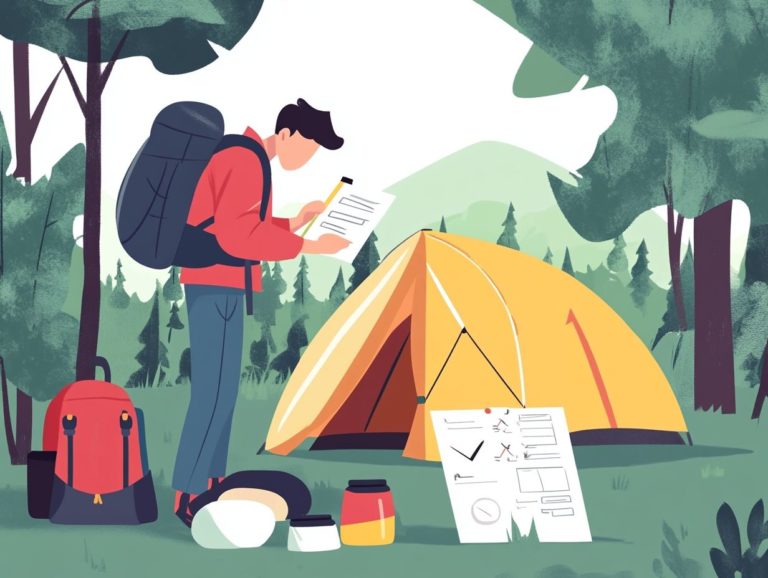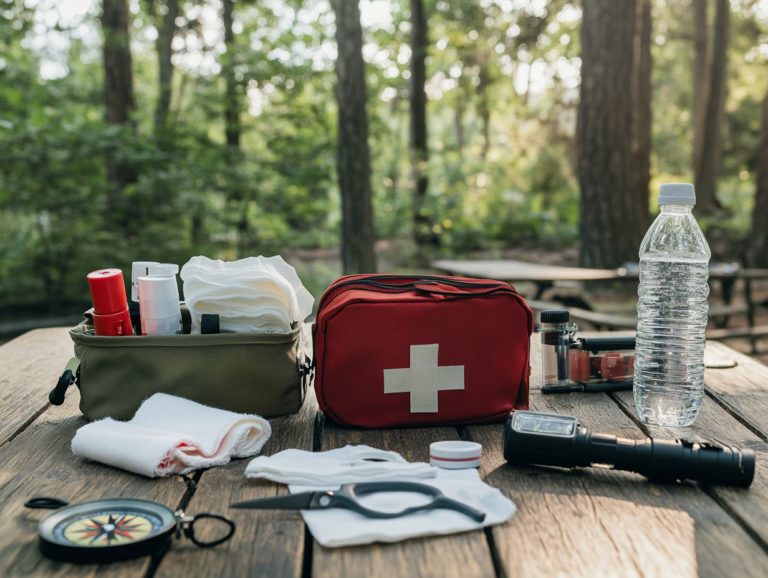How to Choose the Right Camping Knife
When you venture into the great outdoors, having the right gear can truly elevate your experience. A camping knife stands out as one of the most essential tools to include in your pack.
This article delves into the many uses a camping knife can serve, from food preparation to gear repair. You’ll explore the various types available, such as fixed versus folding blades, and discover the key features to consider, including material, size, and added functionalities. It also includes maintenance tips to keep your knife in top shape.
Whether you’re an experienced camper or just starting your outdoor adventure, selecting the right camping knife will enhance your experiences in nature.
Contents
- Key Takeaways:
- Understanding the Purpose of a Camping Knife
- Types of Camping Knives
- Important Features to Consider
- Choosing the Right Size for Your Needs
- Maintaining and Sharpening Your Camping Knife
- Frequently Asked Questions
- 1. What factors should I consider when choosing the right camping knife?
- 2. What is the difference between a fixed blade and a folding camping knife?
- 3. How important is the blade material when choosing a camping knife?
- 4. Is a serrated or a straight edge blade better for a camping knife?
- 5. Can I use a kitchen knife for camping?
- 6. How do I know if a camping knife is legal to carry?
Key Takeaways:
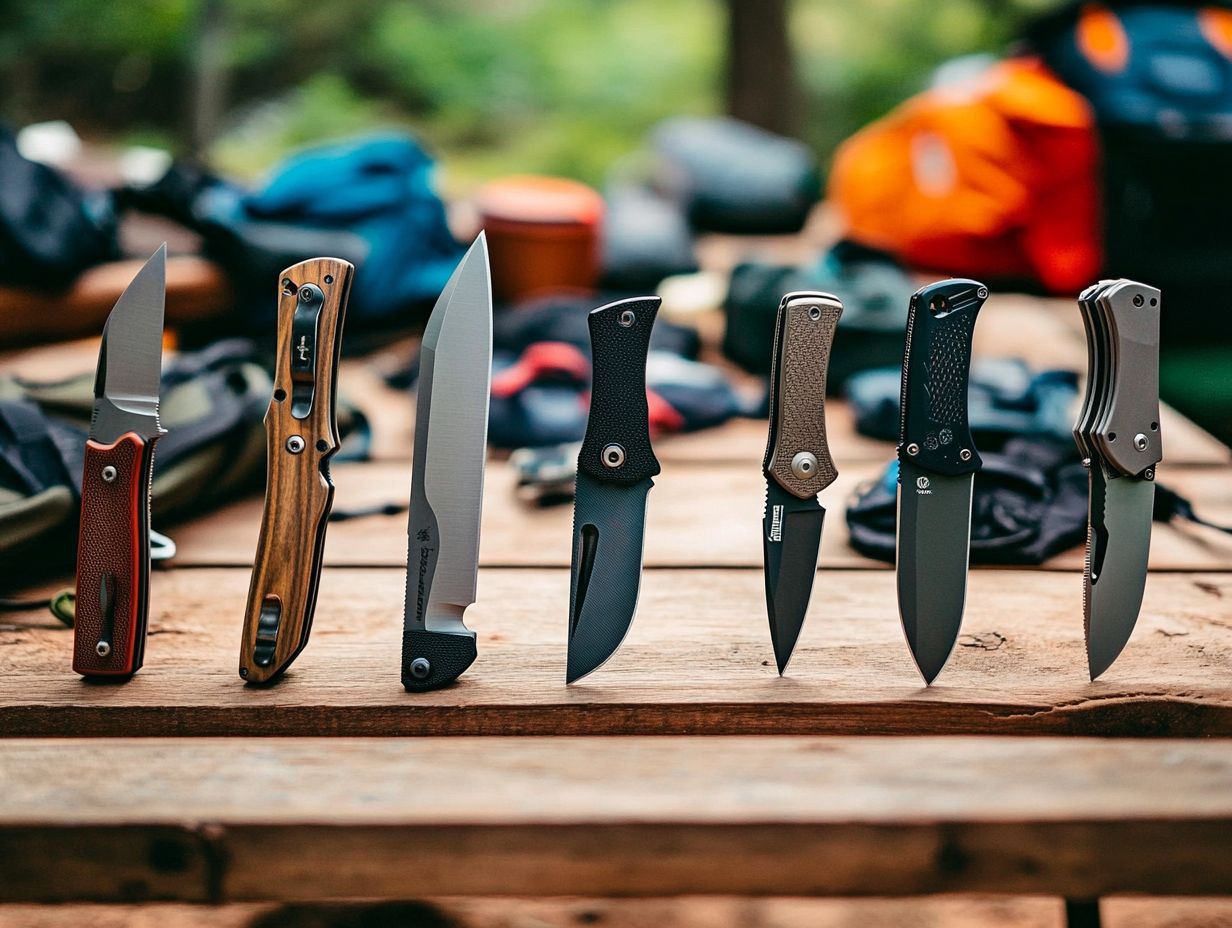
- Consider the purpose of your camping knife and the tasks it will need to perform before making a purchase.
- Choose between a fixed or folding blade, and decide if you need a multi-tool or a single-blade knife.
- When choosing a camping knife, consider the blade and handle materials, grip, and additional features like serrated edges (teeth-like notches that help cut through tougher materials) or gut hooks (specially designed notches that assist when preparing game).
Understanding the Purpose of a Camping Knife
A camping knife is an essential tool in your outdoor gear, expertly crafted to provide reliable support for a range of activities in the wild.
Whether you find yourself trekking through a dense forest, prepping a meal, or constructing a shelter, having the right camping knife can elevate your experience and bolster your safety.
It’s important to appreciate the diverse roles a camping knife can play, from slicing through ropes to preparing kindling. This ensures it becomes an invaluable companion for any outdoor enthusiast like yourself.
What Tasks Can a Camping Knife Perform?
A camping knife is your go-to tool for countless tasks that are vital for a successful outdoor adventure, serving as a versatile blade that adapts seamlessly to various situations.
Picture this: when it comes to food preparation, its sharp stainless steel blade makes quick work of slicing through meats and vegetables, ensuring you re well-fed during your escapades.
Need to cut rope for assembling a shelter or organizing gear? This knife has got you covered! The comfortable handle design offers a firm grip, allowing you to tackle intricate tasks with precision.
In emergencies, your camping knife is even more invaluable. It can assist with first-aid needs by providing quick access to bandages and supplies, thanks to its convenient folding features and safety locks. This makes it a reliable companion in the great outdoors. Whether you re carving firewood or whipping up a meal, a camping knife is essential for every adventurer.
Types of Camping Knives
When you re selecting the perfect camping knife, grasping the nuances of different knife types is crucial, as it directly influences their effectiveness and suitability for your outdoor adventures.
Among the most prevalent options, you ll find fixed blade and folding blade knives, each presenting distinct advantages and features designed to meet varying needs.
Fixed blade knives are celebrated for their strength and durability, shining in heavy-duty tasks. In contrast, folding blades offer convenience and portability, making them a favored choice for hikers and campers alike.
Fixed Blade vs. Folding Blade
The decision between a fixed blade and a folding blade camping knife ultimately hinges on your specific outdoor activities and personal preferences. Each type boasts unique features that can profoundly impact your wilderness experience.
For instance, a fixed blade knife is often lauded for its impressive blade strength and durability, making it an outstanding ally for heavy-duty tasks like chopping wood or crafting kindling.
In contrast, folding knives excel in portability, allowing you to effortlessly slip them into your pocket or backpack.
Safety is another crucial factor to consider; folding knives are typically equipped with locking mechanisms that significantly reduce the risk of accidental injuries when stored. Additionally, evaluating the advantages of different knife handles and sheaths can aid in your selection, as a comfortable grip ensures enhanced control during a variety of cutting tasks.
Multi-Tool vs. Single-Blade
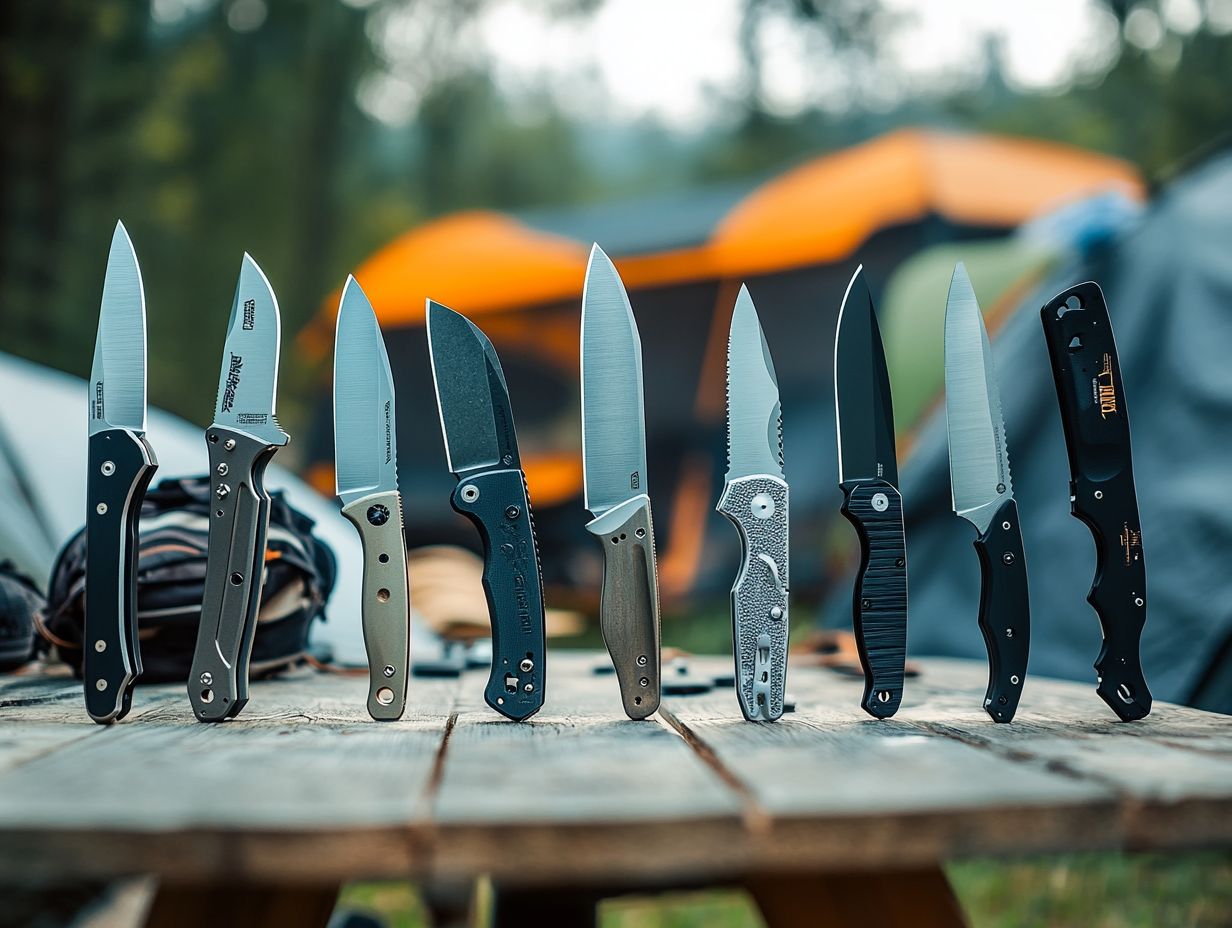
When considering a camping knife, you may find yourself weighing the merits of a multi-tool against a single-blade option. Each brings its own unique functionalities to the table.
The multi-tool truly shines with its impressive versatility. With various attachments, you can tackle everything from popping open a bottle to making quick repairs on your gear. This adaptability becomes a lifesaver in unexpected outdoor situations, making it an essential companion during your adventures.
A single-blade knife is ideal when precision and strength are crucial. Whether you re gutting a fish or preparing a meal, its dedicated knife edge is perfect for tasks that demand focus and accuracy.
Regardless of your choice, proper knife maintenance is key to ensuring longevity and performance. Many modern designs include a comfortable grip, enhancing usability and making extended handling a pleasure.
Important Features to Consider
When choosing a camping knife, be mindful of essential knife features like blade material, handle design, and edge type. These elements can really impact your knife experience!
The perfect blend results in a durable knife that is comfortable to wield and ready to endure the demands of outdoor adventures.
By understanding these key features, you empower yourself to make an informed choice that aligns with your needs and preferences.
Blade Material and Length
The blade material and length of a camping knife are crucial elements that impact its cutting effectiveness and durability. For outdoor enthusiasts, understanding the differences between materials like carbon steel and stainless steel is essential.
Carbon steel is a strong type of steel that holds its sharp edge well but requires regular upkeep to prevent rust. This option suits those who prioritize performance and are willing to invest time in maintenance.
Stainless steel boasts excellent corrosion resistance, making it a fantastic choice for wet conditions. However, it may not always achieve the same level of sharpness as carbon steel.
Picking the right blade length matters. Longer blades are great for big tasks, while shorter ones excel in precision for detailed work. By balancing these factors, you can confidently select the ideal knife shape for your camping needs.
Handle Material and Grip
The knife handle is a crucial element that shapes your comfort and control while using a camping knife. The choice of handle materials is exceptionally important.
Selecting the right handle material can greatly enhance your outdoor experience. For example, rubber handles offer a non-slip grip, especially beneficial in wet conditions, ensuring you maintain optimal control when it matters most.
Micarta stands out for its durability and aesthetic appeal, providing a comfortable feel that can endure harsh environments. These materials influence your grip and affect the knife’s performance in various tasks, from food preparation to wood carving.
As an adventurer, you must consider your specific needs when choosing the perfect knife, like a Mora knife or a Kam Knife.
Additional Features (Serrated Edge, Gut Hook, etc.)
Features like a serrated edge or a gut hook can significantly enhance the functionality of your camping knife. They cater to specific tasks you might encounter during your outdoor adventures.
These versatile tools make slicing tough rope or preparing meals easier, ensuring you’re well-equipped for any challenge. Options like folding knives offer portability for stowing away, while fixed-blade models provide the durability needed for heavier tasks.
Some camping knives even come with built-in can openers and screwdrivers, making them invaluable companions for your trips. Whether you’re clearing brush, prepping fish, or savoring a meal around the bonfire, the right camping knife with these added features can elevate your outdoor experience.
Choosing the Right Size for Your Needs
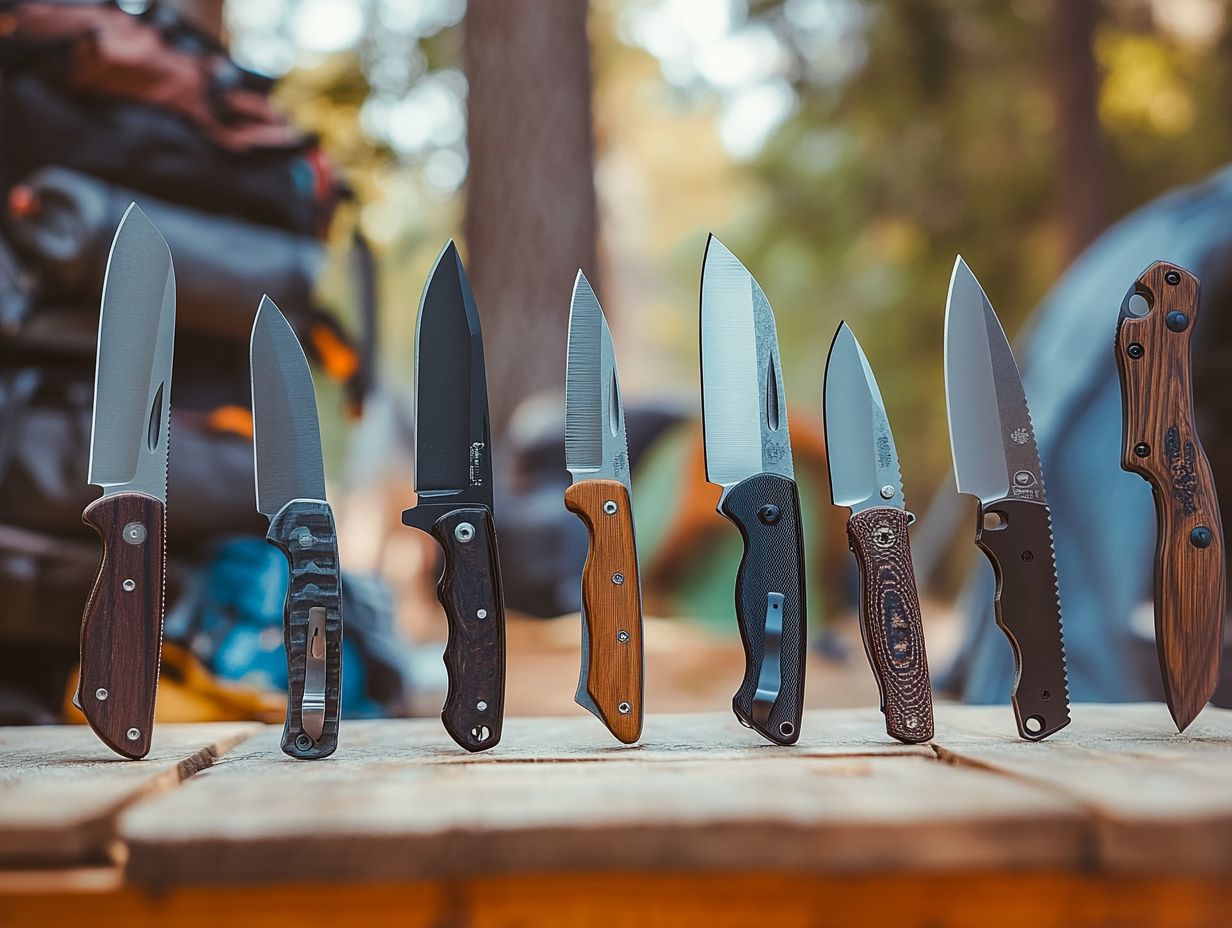
Selecting the perfect size for your camping knife is crucial. It ensures that the knife aligns with your specific needs and elevates your outdoor experience to new heights.
Factors to Consider
When you re selecting a camping knife, several crucial factors come into play. These include knife features and knife selection, which influence your choice, effectiveness, and safety of this essential tool.
Blade length and knife shape should be high on your list of considerations. A longer blade is great for tasks that demand cutting power, like processing firewood. In contrast, a compact blade shines in precision tasks, such as food preparation.
Weight and knife features are vital aspects to consider. A lightweight knife can save you from fatigue during long hikes, while a heavier option might offer the added durability you desire.
Also, consider your intended use. Is it for basic camping chores, survival scenarios, or backpacking adventures? This will guide your choice significantly.
Regular maintenance is key. Clean and hone the blade to keep it reliable and ready for action on all your outdoor excursions.
Maintaining and Sharpening Your Camping Knife
Proper maintenance and sharpening of your camping knife are essential. They ensure it remains a dependable companion on your outdoor adventures and enhance its performance.
By utilizing the right techniques and tools, you can extend the lifespan of your knife. Regular care prevents rust and damage while preserving the integrity of both carbon steel and stainless steel blades. This allows you to tackle any challenge with confidence and precision.
Proper Care and Maintenance Techniques
Proper care and maintenance techniques are essential for keeping your camping knife a reliable tool for years to come.
Whether you have a fixed blade or a folding blade, knowing how to clean, oil, and store your knife properly can enhance its longevity. Clean the blade after each use to prevent rust and buildup, ensuring you maintain a sharp cutting edge.
Oiling the pivot of folding blades allows for smooth operation and minimizes wear. Apply a protective layer to fixed blades to help resist moisture.
Storing your knife in a dedicated sheath or protective case safeguards it from accidental damage and misplacement. This ensures that this vital piece of camping gear is always ready for your next outdoor adventure.
Sharpening Methods and Tools
Discovering the right sharpening methods can make your camping knife a powerhouse for all your outdoor adventures!
Familiarize yourself with techniques like using whetstones, honing rods, and pull-through sharpeners. These tools help keep your knife sharp and ready for action.
Whetstones provide precise control over the sharpening angle, resulting in a finely honed edge. Honing rods are perfect for maintaining that edge between sharpenings, helping to align the blade and minimize wear.
On the flip side, pull-through sharpeners offer convenience for quick touch-ups. Each of these methods plays a vital role in enhancing your knife’s longevity and performance, making it crucial for tackling a variety of camping tasks.
Frequently Asked Questions
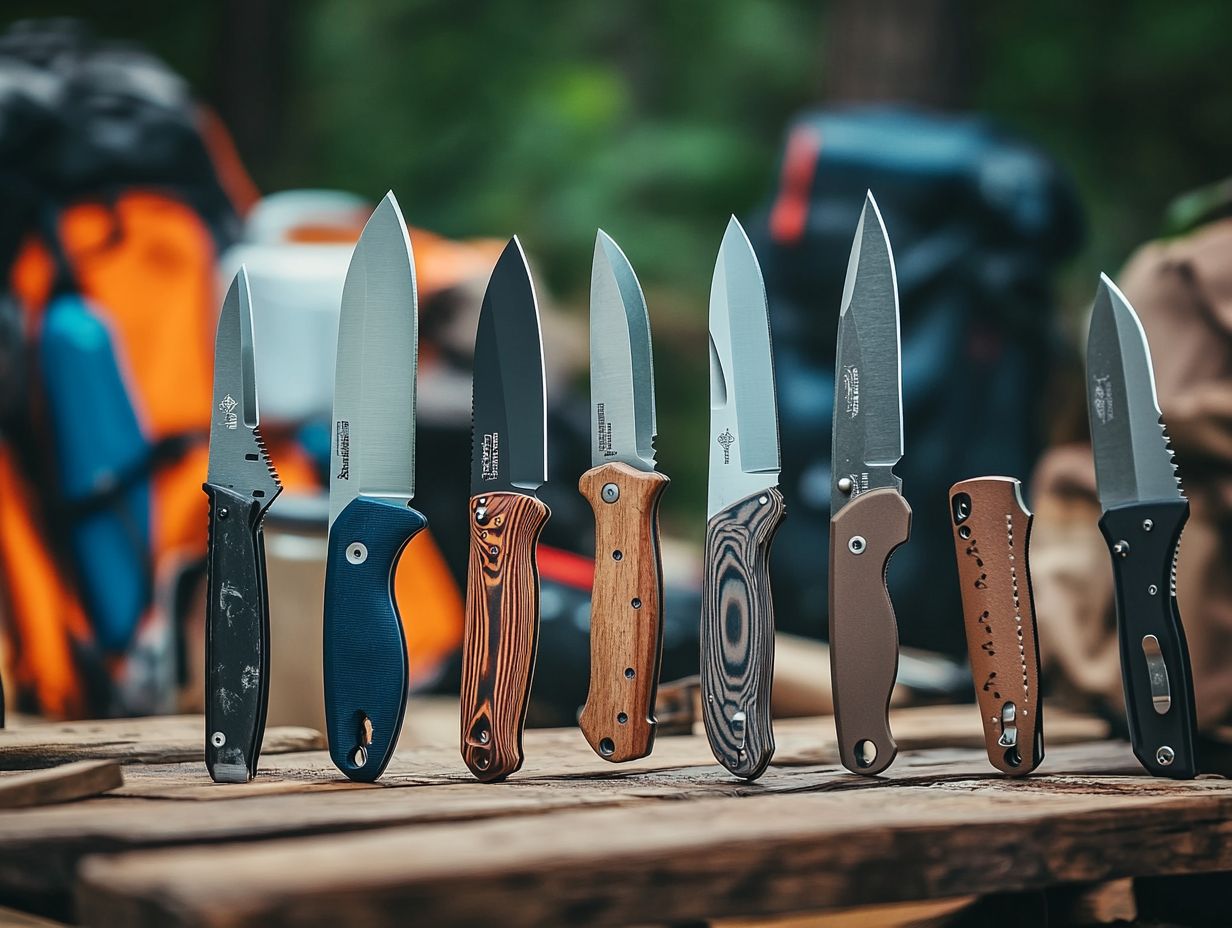
1. What factors should I consider when choosing the right camping knife?
Camping knives are essential tools for outdoor adventures. Here s what you need to consider when choosing one:
- Blade Type
- Blade Length
- Handle Material
- Overall Weight
Choose a camping knife by considering the blade type, length, handle material, and weight. Each factor affects your overall experience.
2. What is the difference between a fixed blade and a folding camping knife?
A fixed blade camping knife has a blade that is permanently attached to the handle. In contrast, a folding camping knife has a blade that can be folded into the handle. Both types have unique benefits based on your needs.
Fixed blade knives are generally more durable and stronger. Folding knives are compact and easier to carry. Your personal preference and intended use will guide your choice between the two.
3. How important is the blade material when choosing a camping knife?
The blade material is crucial in determining the overall quality and performance of a camping knife. Popular materials include:
- Stainless Steel
- High Carbon Steel
- Titanium
- Ceramic
These materials, like VG10 and AUS8, are known for their strength and resistance to rust. Consider how you plan to use the knife and its maintenance needs when selecting the blade material.
4. Is a serrated or a straight edge blade better for a camping knife?
Both serrated and straight edge blades have their pros and cons. A serrated blade excels at cutting through tough materials like rope and wood. Conversely, a straight edge blade is versatile and easier to sharpen.
Your intended use should guide your choice between a serrated or straight edge blade.
5. Can I use a kitchen knife for camping?
Don t risk it! A kitchen knife isn’t built for the great outdoors. Choose a camping knife designed for outdoor use. Camping knives have features like sturdy blades, non-slip grips, and durable handles to withstand the elements and rough use.
6. How do I know if a camping knife is legal to carry?
Laws about carrying knives vary by location. Research local laws to stay informed and avoid issues. Generally, camping knives with blades under 3 inches are often legal to carry, but it’s best to check with local authorities.

